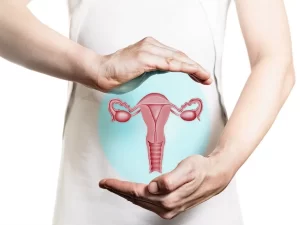

Dr. Arun Kumar Giri, Director-Surgical Oncology, Aakash Healthcare, Dwarka
The thyroid gland is a butterfly-shaped gland in the front of the neck that produces hormones that help the body to function normally. Even a minor thyroid imbalance can have a number of negative consequences for the health and well-being.
Hypothyroidism is a condition in which the thyroid hormone produced by the body is insufficient. You may have an underactive thyroid if you are constantly tired, overweight, and unable to tolerate cold temperatures. Hyperthyroidism, on the other hand, occurs when the body produces too much thyroid hormone, causing weight loss, anxiety, sleep problems, irregular periods, and sensitivity to heat.
Thyroid swelling (goitre), as well as benign and malignant (cancerous) thyroid nodules, are the other prominent disorders of the thyroid gland.
Thyroid cancer is becoming more common in India, particularly among the younger population. It is usually asymptomatic, or can appear as a lump in the neck. During clinical exams or imaging studies such as CT scans or sonograms, it is frequently mistaken for a benign thyroid nodule. If the cancer is not detected early enough, it can spread and cause pain, swallowing problems, and hoarseness.
Some of the common signs of thyroid cancer are:
· Lump in the neck that can be felt through the skin
· Voice changes, including increasing hoarseness
· Swallowing problems
· Neck and throat discomfort
· Neck lymph nodes that are swollen
· Bony swelling or pain( in cases of metastasis to bone)
Thyroid cancer affects women three times more than men. Women in their 40s and 50s, as well as men in their 60s and 70s, are commonly diagnosed with the disease. It is also the second most common cancer found in pregnant women after breast cancer.
Most thyroid cancers are curable with thyroid surgery and radioiodine treatment if caught early. The majority of thyroid nodules are benign, with only 5% of nodules proving to be cancerous on average. Depending on the situation, your doctor may recommend that you have a thyroid ultrasonography and, if necessary, a needle test of the nodule.
Papillary Thyroid Cancer
The most common type of thyroid cancer is papillary thyroid cancer (also known as papillary thyroid carcinoma). Papillary carcinoma most commonly appears as a solid, irregular, or cystic mass in otherwise healthy thyroid tissue. This type of cancer has a high cure rate, with 10-year survival rates for all papillary thyroid cancer patients estimated to be over 90%.
Surgery is the most common treatment option for papillary thyroid cancer around the world. Thyroid lobectomy may be used to treat papillary carcinomas that are well-circumscribed, isolated, and less than 4 cm in young patients (20 to 40 years old) with no history of radiation exposure (also called hemithyroidectomy, removal of half of the thyroid gland). A total thyroidectomy is the other surgical option for patients with papillary thyroid cancer (complete removal of the thyroid gland).
Other less common types of thyroid cancer are follicular, medullary and anaplastic carcinomas.
*How can thyroid cancer be prevented?*
Genetic tests can determine if you have an altered gene (a mutation) that increases your risk of medullary thyroid cancer or multiple endocrine neoplasia. If you have the faulty gene, you may choose to have your thyroid gland removed as a preventive (prophylactic) procedure before cancer develops.
Iodine is necessary for normal thyroid gland function, so eating foods like fish, dairy products, and iodized salt can help avoid thyroid-related issues.






